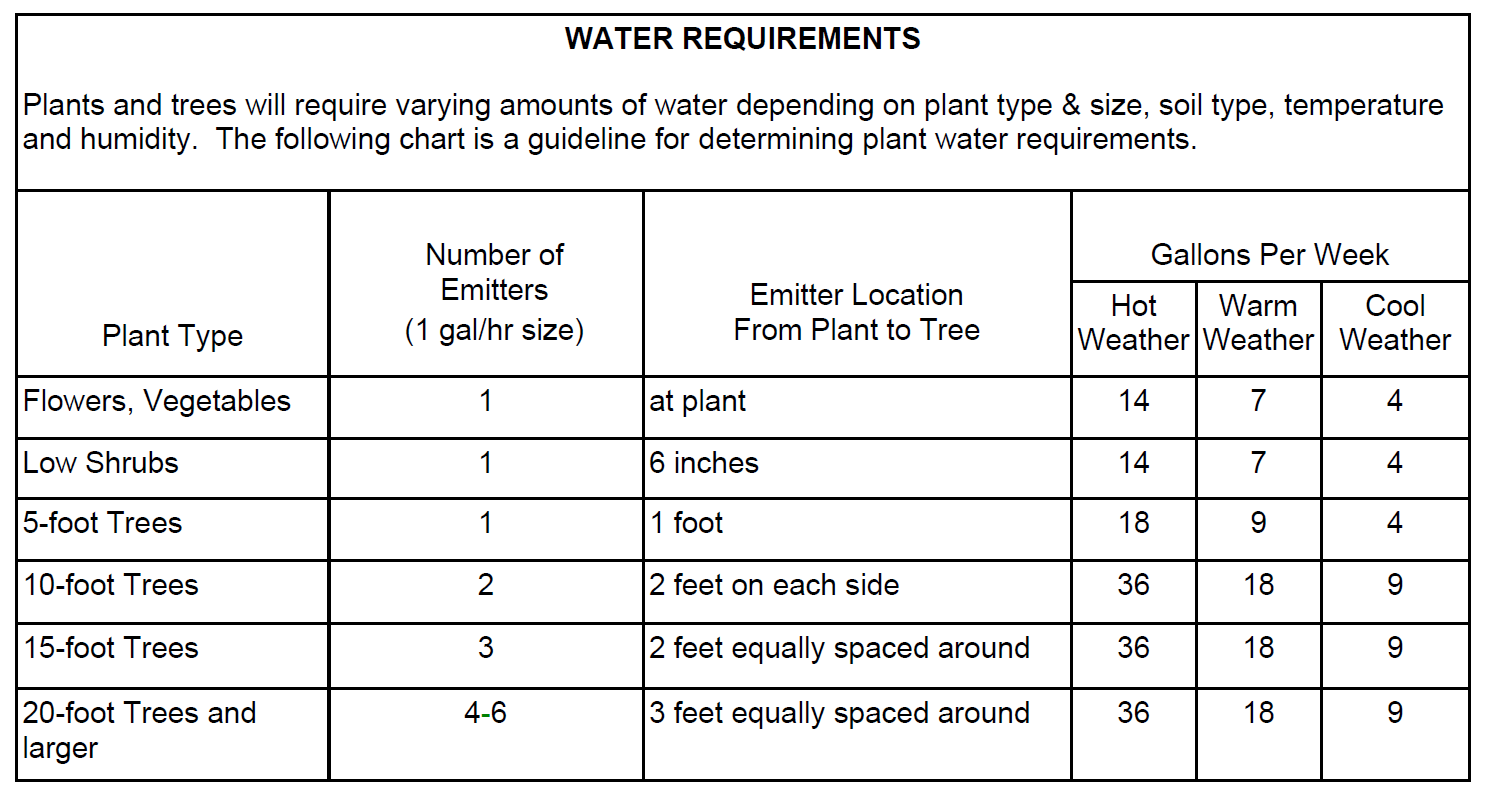Key Points
- One of the most important ways to conserve water in our gardens and yards is with drip irrigation.
- Drip irrigation is easily installed and costs are moderate.
- Drip irrigation can possibly lead to some salt buildup and restricted root systems if operated improperly.
- Monitor moisture levels before and after running the system to determine run time and frequency.
The most efficient watering technique is the trickle or drip irrigation system. This system is designed to prevent water stress. Water is provided at slow, steady rates (0.5 to 2 gallons/hour) under low operating pressure (5 psi). It is directed only to the root system or part of the root system. Emitters or microtubes deliver the water to the base of each plant. Low pressure, black polyethylene pipe can be used.
A pressure regulator and a water filter may be necessary. Costs for this system are moderate, depending on the type of emitters used and the need for filtration. Salt build-up can occur in the soil due to the low volumes of water used which prevents leaching. However, turning the system on during a rain or setting some overhead sprinklers in the beds monthly will facilitate leaching.
Advantages of the Drip System
- It is easy and economical to install.
- Water is applied only to the plant resulting in fewer weeds.
- Plants are less susceptible to disease.
- It is easily mechanized.
- It promotes better plant growth.
Disadvantages of Drip Irrigation Are:
- The wetting zone produced is small & can lead to restricted root system development in trees & shrubs.
- Improper placement can lead to an increase in salts. Emitters must be moved outward every 2 years or so to allow roots to expand latterly.
How much water to apply?
As a good rule of thumb, consult the table below. A good way to determine how long and how much is to do the following: let the system run for a reasonable time (1 to 2 hours). Take a shovel and dig next to the edge of the watered area to determine how deep and wide an area has been soaked. See below for Water Requirements chart.

